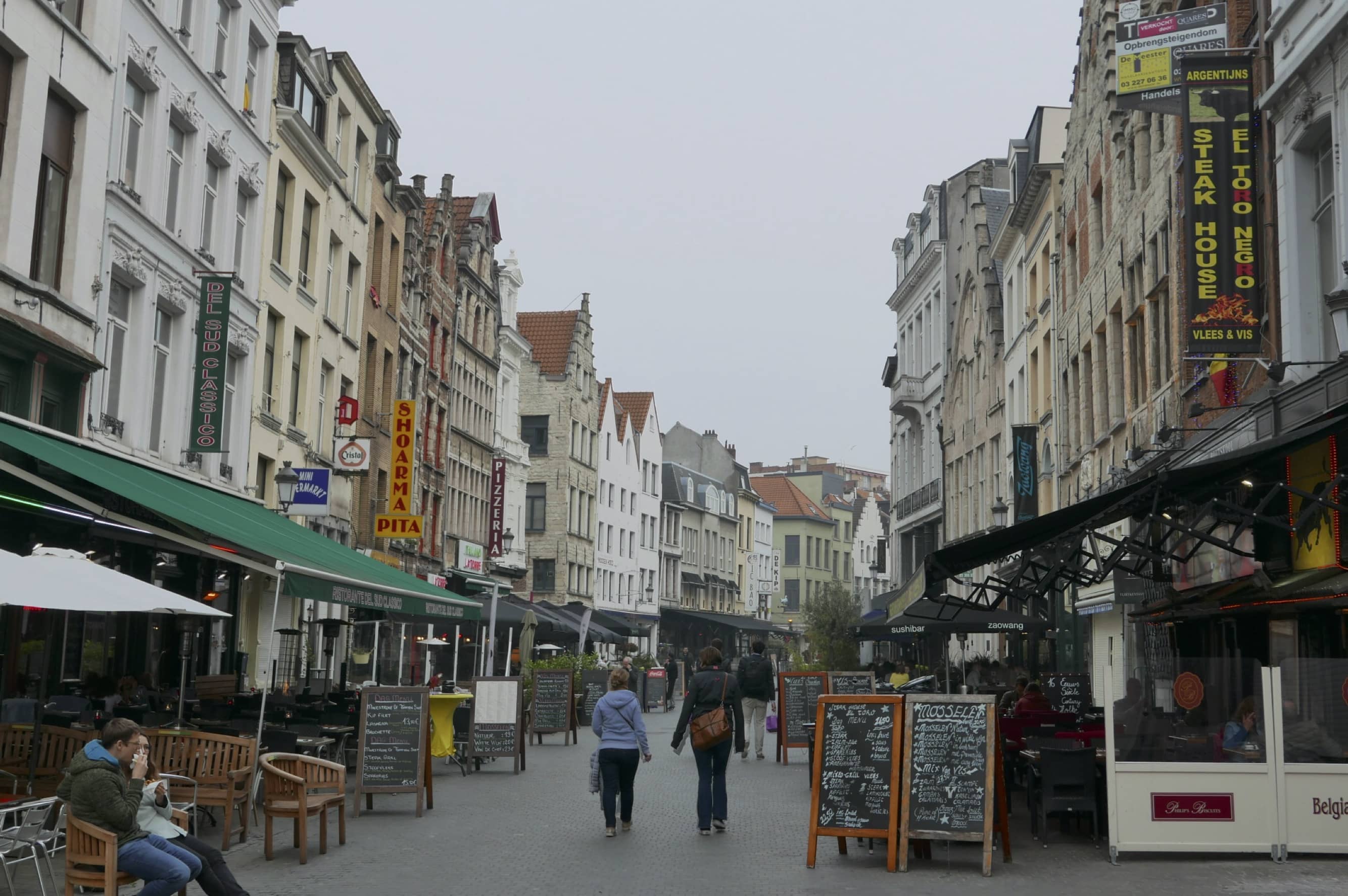
www.buildingsandcities.org/insights/commentaries/future-urban-research-commons.html
Future Urban Research: Focus on the Commons

Challenges ahead: framing urban research as a commons activity and as a research agenda
The focus of urban research has shifted in recent years.While the traditional focus was on aspects of urban provision (e.g. mass transit, housing, other infrastructure), the recent emphasis has shifted to the 'end goals' of urbanisation - e.g. sustainability, resilience, well-being, etc. In all these, a constant underlying theme has been the emphasis on creating and managing places. Rohinton Emmanuel (Glasgow Caledonian University) explains why future research needs to focus on the urban commons.
Our world is on the cusp of overwhelming urbanisation over the next two decades. Built environment research is increasingly seen as urban research - more specifically, 'sustainable urban futures' (Dixon 2022) or 'sustainable urban systems' research (Ramaswami et al. 2018).
As the world continues to urbanise we face unintended consequences, for instance, the urban heat island effect. How, therefore, should we study and explore the social, economic and environmental implications urban placemaking? One approach to urban research, is to focus on its essence - i.e. to see urban spaces as 'communal.' In other words, it concerns the 'commons.'
'Commons' is that which belongs to all. Garrett Hardin (1968) who popularised the term in the 1960s explored the 'tragedy' of the commons - 'tragedy' in the sense of 'remorseless working of things' (p. 1244) and the outcome of the unfettered use of the commons being its own demise i.e. 'freedom in a commons brings ruin to all'. (p. 1244). However, the Nobel laureate Elinor Ostrom (1990) did not agree with this inevitability of the commons leading to ruination, rather she showed that there are traditional and modern approaches to managing the commons that do not lead to decline. Nevertheless, both these views do not strictly apply to the 'urban commons' in all instances though uncritical use of commons in cities can be problematic if not managed and governed carefully (Foster & Iaione 2019). The difficulty arises from a consideration of the commons as a Common Pool Resource (CPR). Transposing CPR in an urban setting may not always be appropriate, thus, there is evidence in theory, and in practice, that in the urban situation, the 'tragedy of the commons' may not apply in all cases. For instance, use of communal gardens, clearly deprives others from using them, however, using other open spaces, streets and parks doesn't limit others from using them (Löfgren 2014). Indeed the value of these 'resources' increases in proportion to their use. Borch & Kornberger (2015, p. 12) put this succinctly:
The (urban) commons is not a pooled resource; in contrast to water, grass or fresh air, the urban only comes into existence through the encounter of people, things and ideas. Density and proximity are the intangible fibres that are woven into the fabric of the urban commons. Far from being a 'pool', the urban commons is . . . the corollary of interactions in a dense network.
In other words, the urban commons is central to the liveability of cities, created, improved and modified by the interactions between urban dwellers. It is the quality and quantity of these interactions that make as well as enhances the value of urban commons.
Place-making has long been seen as central to urban planning (Jacobs 1961). Some places arise spontaneously while others are purpose-made, yet success in either case is due to a variety of factors: social and cultural at the core but also economic, political and, when speaking of sustainable places - ecological and environmental factors too are important. Successful urban places (i.e. successful urban commons) are "not simply out there, waiting to be exploited; rather they must first be produced and then constantly reproduced" (Borch & Kornberger 2015: 12).
What does the urban commons mean for urban research?

Photo: Robinton Emmanuel.
Wang et al. (2024) identified four key success factors for urban commons which perhaps point to a research agenda for successful urban commons:
- Have established rules, and property rights arrangements
- Allow institutional diversity
- Give the public more institutional control over resources
- Have platforms that provide dedicated competences and resources as well as political and administrative support
It is important to study how and which designs of rules and property rights arrangements can encourage public participation, give back institutional control over resources and harness agency (Wang et al. 2024). Secondly, institutional diversity is needed for the variety of places that form the urban commons (such as street, neighbourhoods, whole cities and perhaps regions/agglomerations). Wolman et al. (2022) have identified key questions which in this context may include:
- How are variations produced?
- By what systems, decisions, communities, policies, histories, initial conditions, or endowments are the differences between places developed and maintained?
- Are there ways to design systems and processes that produce more equitable, sustainable, and efficient outcomes?
Given the centrality of communities to urban commons, research is needed to clearly define the community (or the 'public'), and who has 'rights to the city.' A key question in this regard is how to change the regulation of public and private property to give citizens institutional control over resources, and how to work with/through local government to enable and protect the urban commons (Wang et al. 2024)
Finally, there is a need to enhance competencies of both the administrators of the urban commons as well as the public to make the commons successful. A key to such competencies is data and future research may focus on novel ways to collect data, for instance through citizen science. In areas such as outdoor comfort, microclimate, air quality and noise, for example, there is already evidence to the utility of citizen science (Schuetze et al. 2024), but research needs in this area include development and operationalisation of platforms for data sharing, machine learning to enhance pattern detection and forecasting and closer integration between data co-production and policy making.
A recent report sponsored by the US National Science Foundation on long-term research agendas for sustainable urban systems (Ramaswami et al. 2018) argued for the integration across three scales: single urban areas where multiple sustainability outcomes are addressed; multiple cities exploring inter-relationships among networks of cities, and, supra-aggregations of cities to assess the collective impact of urban transformation on people and planet. Across these scales and perspectives, several research questions were identified concern the urban commons that can
- What is the impact of changes arising in urban areas on local well-being, on the transboundary distribution of benefits and burdens across communities (urban and rural), and on planetary boundaries?
- What shapes human well-being in diverse urban areas, including city cores, and along urban-rural gradients?
- What are the different modalities for co-producing actionable science at the different scales?
The research funding landscape is changing rapidly, some would even argue it is shrinking (Auranen & Nieminen 2010) and universities, traditionally the centres of academic research, are struggling to make ends meet. In this context, research on the urban commons will need to look elsewhere - practitioners, communities and other co-producers leading to knowledge transfer for improved wellbeing. Action research that enhances the value of urban commons by greater usage, may offer an opportunity to make meaningful difference to the life of urban dwellers even as it contributes to new knowledge. Urban commons as Living Labs, could offer additional long-term research facilities to engage both practitioners and urban communities.
References
Auranen, O. & Nieminen, M. (2010). University research funding and publication performance-An international comparison. Research Policy, 39(6), pp 822-834. https://doi.org/10.1016/j.respol.2010.03.003
Borch, C. & Kornberger, M. (eds). (2015). Urban Commons: Rethinking the City. Routledge. https://doi.org/10.4324/9781315780597
Dixon, T.J. (2022). Sustainable urban futures and sustainable urban systems in the built environment: towards an integrated urban research agenda. Journal of Sustainability Research, 4(4), e220015. https://doi.org/10.20900/jsr20220015
Foster, S. & Iaione, C. (2019). Ostrom in the city: design principles for the urban commons. In, B. Hudson, J. Rosenbloom, D Cole (eds.) Routledge Handbook of The Study of The Commons, pp. 235-255. Routledge.https://doi.org/10.4324/9781315162782-19
Hardin, G. (1968). The tragedy of the commons. Science, 162 (3859), pp. 1243-1248. https://doi.org/10.1126/science.162.3859.1243
Jacobs, J. (1961). The Death and Life of Great American Cities. Random House. ISBN: 0-679-74195-X
Löfgren, O. (2014). Urban atmospheres as brandscapes and lived experiences. Place Branding and Public Diplomacy, 10(4): 255-266, https://doi.org/10.1057/pb.2014.26
Ostrom, E. (1990). Governing the Commons: The Evolution of Institutions for Collective Action. Cambridge University Press. https://doi.org/10.1017/CBO9780511807763
Ramaswami, A., Bettencourt, L., Clarens, A., Das, S. et al. (2018). Sustainable Urban Systems: Articulating a Long-term Convergence Research Agenda. The National Science Foundation. https://nsf-gov-resources.nsf.gov/2022-12/Sustainable-urban-systems-508c.pdf
Schuetze, C., Koedel, U., Herrmann, T.M., Liang, C. & Dietrich P. (2024). Citizen science and climate services in cities: current state, new approaches and future avenues for enhancing urban climate resilience. Frontiers in Earth Science, 12. https://www.frontiersin.org/journals/earth-science/articles/10.3389/feart.2024.1461334
Wang, X., Lam, W.F. & Lorenzo, T. (2024). A synthesis of rational choice and critical urban commons debates. International Journal of the Commons, 18(1), pp. 475-489. https://doi.org/10.5334/ijc.1277
Wolman, H., Barnes, W., Clark, J., Friedman. S., Harris, R., Lin, J. & Ogorzalek, T. (2024). The state of urban research: views across the disciplines. Journal of Urban Affairs, 46:3, pp. 425-462. https://doi.org/10.1080/07352166.2022.2080073
Latest Peer-Reviewed Journal Content
A framework for 1.5°C-aligned GHG budgets in architecture
G Betti, I Spaar, D Bachmann, A Jerosch-Herold, E Kühner, R Yang, K Avhad & S Sinning
Net zero retrofit of the building stock [editorial]
D Godoy-Shimizu & P Steadman
Co-learning in living labs: nurturing civic agency and resilience
A Belfield
The importance of multi-roles and code-switching in living labs
H Noller & A Tarik
Researchers’ shifting roles in living labs for knowledge co-production
C-C Dobre & G Faldi
Increasing civic resilience in urban living labs: city authorities’ roles
E Alatalo, M Laine & M Kyrönviita
Co-curation as civic practice in community engagement
Z Li, M Sunikka-Blank, R Purohit & F Samuel
Preserving buildings: emission reductions from circular economy strategies in Austria
N Alaux, V Kulmer, J Vogel & A Passer
Urban living labs: relationality between institutions and local circularity
P Palo, M Adelfio, J Lundin & E Brandão
Living labs: epistemic modelling, temporariness and land value
J Clossick, T Khonsari & U Steven
Co-creating interventions to prevent mosquito-borne disease transmission in hospitals
O Sloan Wood, E Lupenza, D M Agnello, J B Knudsen, M Msellem, K L Schiøler & F Saleh
Circularity at the neighbourhood scale: co-creative living lab lessons
J Honsa, A Versele, T Van de Kerckhove & C Piccardo
Positive energy districts and energy communities: how living labs create value
E Malakhatka, O Shafqat, A Sandoff & L Thuvander
Built environment governance and professionalism: the end of laissez-faire (again)
S Foxell
Co-creating justice in housing energy transitions through energy living labs
D Ricci, C Leiwakabessy, S van Wieringen, P de Koning & T Konstantinou
HVAC characterisation of existing Canadian buildings for decarbonisation retrofit identification
J Adebisi & J J McArthur
Simulation and the building performance gap [editorial]
M Donn
Developing criteria for effective building-sector commitments in nationally determined contributions
P Graham, K McFarlane & M Taheri
Reimagining circularity: actions for optimising the use of existing buildings
R Lundgren, R Kyrö, S Toivonen & L Tähtinen
Effective interdisciplinary stakeholder engagement in net zero building design
S Vakeva-Baird, F Tahmasebi, JJ Williams & D Mumovic
Metrics for building component disassembly potential: a practical framework
H Järvelä, A Lehto, T Pirilä & M Kuittinen
The unfitness of dwellings: why spatial and conceptual boundaries matter
E Nisonen, D Milián Bernal & S Pelsmakers
Environmental variables and air quality: implications for planning and public health
H Itzhak-Ben-Shalom, T Saroglou, V Multanen, A Vanunu, A Karnieli, D Katoshevski, N Davidovitch & I A Meir
Exploring diverse drivers behind hybrid heating solutions
S Kilpeläinen, S Pelsmakers, R Castaño-Rosa & M-S Miettinen
Urban rooms and the expanded ecology of urban living labs
E Akbil & C Butterworth
Living with extreme heat: perceptions and experiences
L King & C Demski
A systemic decision-making model for energy retrofits
C Schünemann, M Dshemuchadse & S Scherbaum
Modelling site-specific outdoor temperature for buildings in urban environments
K Cebrat, J Narożny, M Baborska-Narożny & M Smektała
Understanding shading through home-use experience, measurement and modelling
M Baborska-Narożny, K Bandurski, & M Grudzińska
Building performance simulation for sensemaking in architectural pedagogy
M Bohm
Beyond the building: governance challenges in social housing retrofit
H Charles
Heat stress in social housing districts: tree cover–built form interaction
C Lopez-Ordoñez, E Garcia-Nevado, H Coch & M Morganti
An observational analysis of shade-related pedestrian activity
M Levenson, D Pearlmutter & O Aleksandrowicz
Learning to sail a building: a people-first approach to retrofit
B Bordass, R Pender, K Steele & A Graham
Market transformations: gas conversion as a blueprint for net zero retrofit
A Gillich
Resistance against zero-emission neighbourhood infrastructuring: key lessons from Norway
T Berker & R Woods
Megatrends and weak signals shaping future real estate
S Toivonen
A strategic niche management framework to scale deep energy retrofits
T H King & M Jemtrud
Generative AI: reconfiguring supervision and doctoral research
P Boyd & D Harding
Exploring interactions between shading and view using visual difference prediction
S Wasilewski & M Andersen
How urban green infrastructure contributes to carbon neutrality [briefing note]
R Hautamäki, L Kulmala, M Ariluoma & L Järvi
Implementing and operating net zero buildings in South Africa
R Terblanche, C May & J Steward
Quantifying inter-dwelling air exchanges during fan pressurisation tests
D Glew, F Thomas, D Miles-Shenton & J Parker
Western Asian and Northern African residential building stocks: archetype analysis
S Akin, A Eghbali, C Nwagwu & E Hertwich
Join Our Community

The most important part of any journal is our people – readers, authors, reviewers, editorial board members and editors. You are cordially invited to join our community by joining our mailing list. We send out occasional emails about the journal – calls for papers, special issues, events and more.
We will not share your email with third parties. Read more



Latest Commentaries
COP30 Report
Matti Kuittinen (Aalto University) reflects on his experience of attending the 2025 UN Conference of the Parties in Belém, Brazil. The roadmaps and commitments failed to deliver the objectives of the 2025 Paris Agreement. However, 2 countries - Japan and Senegal - announced they are creating roadmaps to decarbonise their buildings. An international group of government ministers put housing on the agenda - specifying the need for reduced carbon and energy use along with affordability, quality and climate resilience.
Building-Related Research: New Context, New Challenges
Raymond J. Cole (University of British Columbia) reflects on the key challenges raised in the 34 commissioned essays for Buildings & Cities 5th anniversary. Not only are key research issues identified, but the consequences of changing contexts for conducting research and tailoring its influence on society are highlighted as key areas of action.